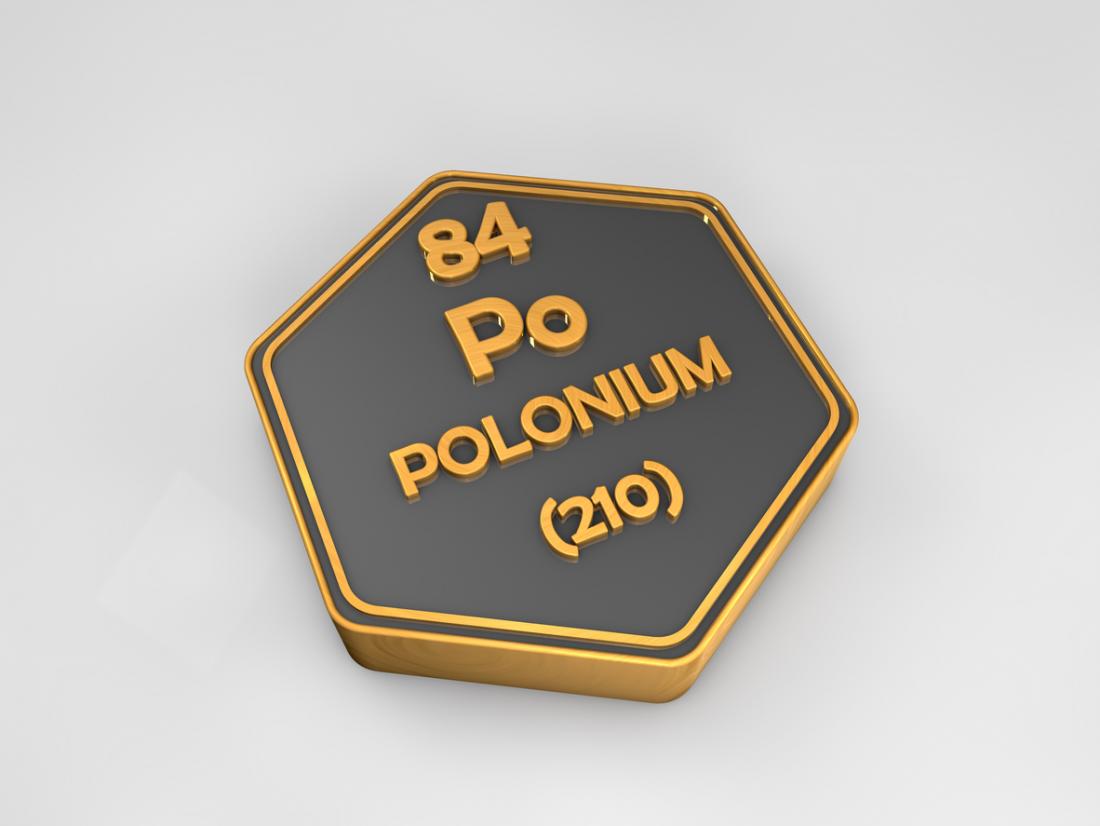For a long time, the use of poison in assassinations is not a new story, but increasingly, the poison killing industry has more and more sophisticated and complex manifestations.
The term Polonium (Po) appeared in the newspapers after it was discovered that former Russian spy Alexander Litvinenko died of it in London in 2006. His wife Yasser Arafat – the late Palestinian president – requested the Palestinian Authority exhumed his body after Swiss scientists discovered traces of Po-210 on the pants and clothes he wore before his death in 2004. So what is the danger level of Po-210? How high is its risk?
Polonium-210
One of more than 20 isotopes of Polonium, Po-210 is also one of the rarest substances on earth. Marie and Pierre Curie – two Nobel laureates – discovered it in 1898. It exists in very small concentrations in the earth’s crust. Today Po-210 is produced in nuclear reactors. People often use Po-210 in small amounts to eliminate static electricity in equipment.
Danger of Polonium-210
Po-210 is an extremely dangerous substance. An amount of Po-210 powder weighing less than one gram can be fatal to humans. A study conducted by the UK Health Protection Agency in 2007 found that once Po-210 enters an individual’s bloodstream, the chances of saving that person’s life are close to zero.
Po-210 is extremely dangerous.
Nuclear physicists refer to polonium as the “Terminator”, not only because it is an extremely effective poison, but also as an element produced in a process known as “neutron capture”. As an element, polonium can be found in the earth’s crust as a product of the decay of uranium-238, accounting for about 1% of the total dose that humans receive each year. The dose of polonium that Litvinenko has infected is about the size of a small needle, worldwide, only about 100g is produced per year and only a few countries have this capacity.
Unlike other radioactive substances, polonium-210 is completely harmless as long as it does not enter the body. But once polonium-210 enters the human body, the alpha radiation emitted by the isotope can be 20 times more harmful than that caused by gamma radiation (from thallium). Gamma rays can penetrate steel, concrete and human tissue. Alpha particles cannot penetrate a sheet of paper or human skin. But if humans swallow or absorb alpha radiation (either through the digestive tract or through inhalation), all the cells in the body will be violently attacked. Alpha particles will kill any exposed cells.
Who can own a Po-210?
The good news is that very few people have the opportunity to own Po-210. It may be a byproduct of uranium chemical processing, but most Po-210 is created in a nuclear reactor or particle accelerator. Such nuclear devices operate under strict supervision and are strictly protected under international treaties.
John Croft, a retired British nuclear radiation expert who investigated the poisoning of former spy Litvinenko, says that only governments with nuclear facilities are capable of generating Po-210 quantities big enough to kill people. Russia, the United States, Israel and more than a dozen other countries possess nuclear reactors or particle accelerators.
Why do assassins like Po-210?
Assassins like Po-210 because it is a powerful weapon. Its alpha radioactive particles do not penetrate the skin and are not detected by radiation detectors. Therefore, people can bring Po-210 across borders easily. Po-210 can enter the human body through an open wound or nose, but the surest method is to dissolve it in the target’s drinks and food. Litvinenko drank tea containing Po-210 during a meeting at a luxury hotel in London.
Cases of Po-210 poisoning are so rare that British doctors needed several weeks to diagnose Litvinenko’s condition, and previous security experts could not find a similar case. More than five years after Litvinenko’s death, British authorities have not arrested any suspects. British prosecutors identified former Russian spy Andrei Lugovoi as the prime suspect, but Russia refused to hand him over to Britain.
Some speculate that Irene, daughter of Pierre and Marie Curie, who died of blood cancer, was infected by accidental exposure to Po-210 in the laboratory.
